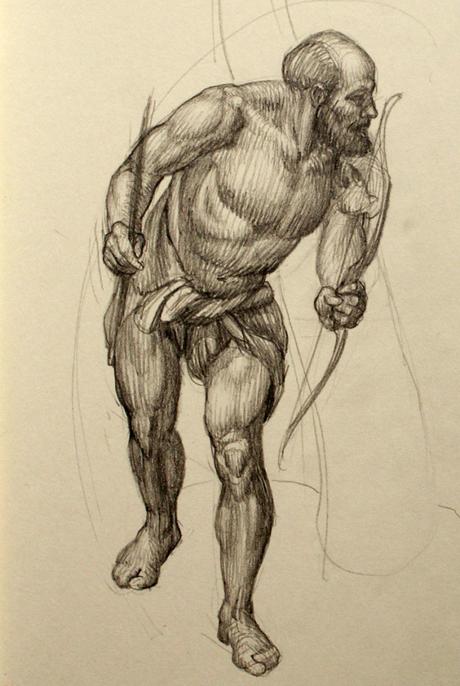
(After Veronese)
To establish some groundwork for my investigation into painting as language, I want to linger a while on the concept of representation, at the same time considering its intimate connection with expression. In the studio, I have seen the word ‘representational’ used passionately, dogmatically, often loosely, but sometimes also cautiously—generally to single out a particular kind of painting that pitches itself against ‘abstract’ painting, though it is also sometimes the preferred term of painters who are equally opposed to ‘realistic’ painting of a more photographic flavor. In such circles, ‘representational painting’ roughly categorises the kind of painting that recognisably looks like something, even if, as in the case of, say, Vuillard, the eyes must linger a while and actively search. Among such artists, there are always some (myself included) who would assert that all painting is an abstraction to some degree—or perhaps better: even the paintings that most closely approximate reality are still an interpretation of things seen.
I like this barrier between painting and the world itself that abstraction and interpretation insert, because it reinforces the idea that an artist never tries to and indeed never can duplicate the physical world, but humbly models her own take on it, a version of it mingled with her own thought and with her own labour—with her very body. Thus, there is only a certain kind of abstraction that such artists would distance themselves from, and it is one that shuns the physical world entirely, expelling it even from memory; a kind of painting that removes all content and distils painting to an exercise in formal properties like shape, colour, tone and the physicality of the surface of the paint. And even then, these representational artists are already very well-versed in such abstractions and use them as jubilantly as their opponents—and usually much more knowledgeably and subtly. The difference, then, must come down to a desire for content, or for the lack thereof.
Thus, we might crudely say that representation implies content—some thing represented. And it may be represented with a high degree of abstraction, though the artist risks being misunderstood the further she strays from the recognisable, or from interpretations of reality that we are already familiar with. The Impressionists took just such a risk, though they finally succeeded when we learned to make sense of their organisation of light (in Gombrich 1959: 275). But much philosophical work has been done on the finer points of representation. It is certainly not enough to appeal to the level of similarity between a picture and that which it represents. Plato (in Gombrich, 1959: 99) decried art for deceiving the mind with illusions, but we are certainly not so taken in by paintings that we believe ourselves transported to another realm, or that we believe the person portrayed to be standing before us. Likeness or resemblance was thus a very early explanation of representation, a crude equivalence of which we have both nothing to fear (in terms of deception) and little to gain. For while Velázquez’s portrait represents Philip IV of Spain, Philip IV does not represent his portrait.
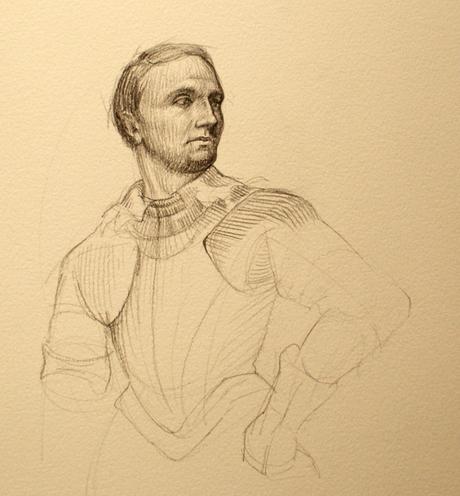
(After Van Dyck)
Goodman (1976: 4) points out this simple observation in Languages of Art, and I think it is a good place to start, if only to remind artists themselves that likeness is not the Promised Land, and that representation opens up a much more generous, exploratory realm. To capture this idea that representation implies content, but that the implication only goes one way, Goodman (1976: 5; 233) appeals to the term ‘denotation.’ When a picture represents some object, the picture denotes the object, that object is denoted by the picture. Denotation introduces symbolism into representation. The picture operates as a symbolic reference to the object, but the object does not symbolically refer to the picture, whatever similarity exists between the two. ‘Denotation is the core of representation and is independent of resemblance,’ explains Goodman (1976: 5). Denotation more explicitly conveys the asymmetry of representation, since we naturally think of a symbol as somehow dependent on the thing it signifies. Denotation runs in one direction.
We thus need another term to capture the relation in the other direction: Goodman (1976: 52; 233) chooses ‘exemplification.’ The object exemplifies what is represented in the picture. With such a relation, we can identify a particular object in a painting, though it was not the very same painted by the artist. We might even align our own private emotions with the content of the picture, finding the picture to be expressive of an emotion we personally feel. The artist surely did not seek to paint our emotion, but our emotion exemplifies that embedded in the painting. More complex than plain symmetry, Goodman has developed a system grounded in symbols comprised of two opposing currents, markedly different in character.
Representation, for Goodman (1976: 40), bears some similarity to verbal description. It runs in the same direction with respect to the object: both verbal descriptions and visual representations denote the object. But for Goodman, the emotional tint of the picture runs counter to this cold, symbolic summary of the object. The emotions come from the side of the viewer, who apprehends the picture ‘through the feelings as well as through the senses’ (Goodman 1976: 248). The expressiveness of the picture is then a subjective experience, coming from the way the spectator identifies with the content of the picture. He integrates its symbols into his own symbol system, and finds his own emotions reflected back at him.
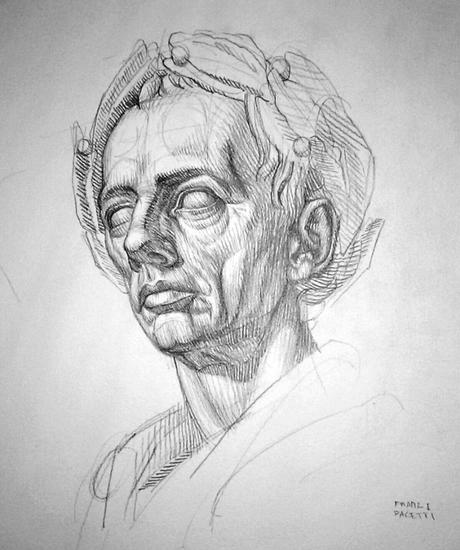
(After Pacetti)
Gombrich (1959: 310) openly questions the division of expression from representation in Art and Illusion. Writing almost two decades earlier than Goodman, he is more liberal with his language analogy, pointing out that not only is verbal language descriptive, it can at the same time be highly charged with emotion, and every shade in between (1959: 310). He suggests a simpler blending of the two, rather than a fundamentally and logically opposed relation. Thus, representation is not simply comparable to verbal description, not simply a record of information by translatable symbols, but it is the very means by which we convey a broad spectrum of descriptive and expressive content. ‘Representation,’ argues Gombrich (1959: 319) ‘is the instrument of information and expression.’
But what can this ‘instrument’ really refer to other than the way paint itself is used? By which I mean the body of the artist mingling, through movement, with the substance of the paint to give both physical form and visual presence to things thought, seen, or imagined. To remove the paint, or other medium, is to force a reliance on something purely conceptual that may take on any physical guise: probably symbols, which may be more readily substituted for words. And this is a mistake that Gombrich falls into. Continuing the analogy with language, Gombrich (1959: 326) argues that ‘all human communication is through symbols.’ Painting, then, may be blanched of its paint, may be stripped to its pictorial skeleton, dissected, analysed, and thus understood. My complaint with him (and with Goodman) is that symbols are not enough; representation consists in so much more: that when we represent something visible by visual means, every physical element is necessary and contributes in some way, even if ever so slightly, even if with such feathery nuance, even if so delicately integrated with other elements that it cannot be individually extracted and examined. Representation may indeed serve description and expression in such a blended way, but always via the medium invoked.

(from the 23 October 1892 issue of Fliegende Blätter)
Gombrich’s appeal to illusion is grounded in a very simple example, which I think demonstrates this fundamental problem in his position on representation. He cites the optical illusion of the duck-rabbit—a picture that at some times resembles a duck, but which by effort of the attention transforms its beak into the long ears of a rabbit. Gombrich’s argument is that one cannot experience illusion at the same time as one experiences reality. It is either rabbit or duck. Thus we cannot be absorbed in the illusion of the picture and at the same time consciously aware of the painted surface. What Gombrich disregards is that we can indeed simultaneously see that the rabbit, drawn in fastidious lines, is printed in black ink on paper, and that likewise, the duck, comprised of the same lines, even as it appears as a duck is evidently printed in black ink upon a page. It is the duck and the rabbit—the content of the representation—that we cannot see at the same time. In fact, the illusion works precisely because of the printed ink: paint would destroy the trick, for colours would suggest different creatures and tone would give greater or lesser volume to beaks and ears than our eyes would believe. In each case, the representation is bound up in the simplicity of the medium of pen and ink, which can conveniently leave out information that would detract from the other representation. The analogy is misplaced: we certainly cannot see simultaneous competing representations, but we can see a representation and at the same time be aware of its physical extension.
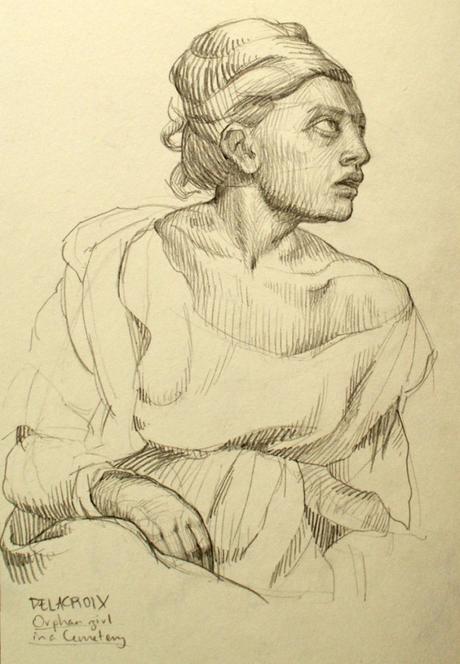
(After Delacroix)
Better than illusion, then: let us follow Wollheim (1987: 185) in finding in representation a call to imagination. We are too aware to be fooled into thinking that representations are reality, or that we do not notice what the representation consists in. But we can gain immense satisfaction from picking up the hints a picture drops and adventuring along a train of thought that it sets in motion. For Wollheim (1987: 101), representation does more than communicate something, and more than stimulate some private daydream. It coaxes us in a particular direction, at the urging of the artist, who inscribes her very trails of thought in wandering streaks of paint. For Wollheim (1987: 7, 15) the medium is indispensable; one cannot divorce the meaning of a painting from the paint. For thoughts are worked through, laid up, reconsidered through the medium. And representation and expression—by means of the medium—‘are the two basic forms of pictorial meaning’ (Wollheim 1987: 305). Rather than looking for a dialog between painter and spectator, Wollheim grounds everything in a kernel of meaning buried deep in a picture, discoverable, moving, compelling, but not linguistic, not ceremoniously imparted from ‘speaker’ to ‘listener.’ A painting does not speak, but guards a thought.
The medium shows its significance in a more primitive visual experience that logically precedes representation: that of ‘seeing-in.’ Wollheim (1987: 306) finds it most expedient to explain what it is to represent by this simple and familiar experience. It is exactly that cited by da Vinci (in Gombrich 1959: 159) as a stimulus to imagination—of seeking forms and faces, even battles and civilisations, in the coarse textures of crumbling walls—and exactly that deemed impossible by Gombrich, of seeing at the same time the suggestion of a figure and the ragged plaster. These simple fancies are the result of imagination, but exist by chance, moulded by the ravages of nature and not carefully crafted after human intentions, and so they are not representations. But the same thing happens when we look at a crafted picture: we are both ‘aware of the surface and [see] something in it’ (Wollheim 1987: 46). When the artist makes use of this feat of vision and applies her paint with the intention that a spectator should discover some particular thing in those marks, this intention, says Wollhem (1987: 101), is representation.
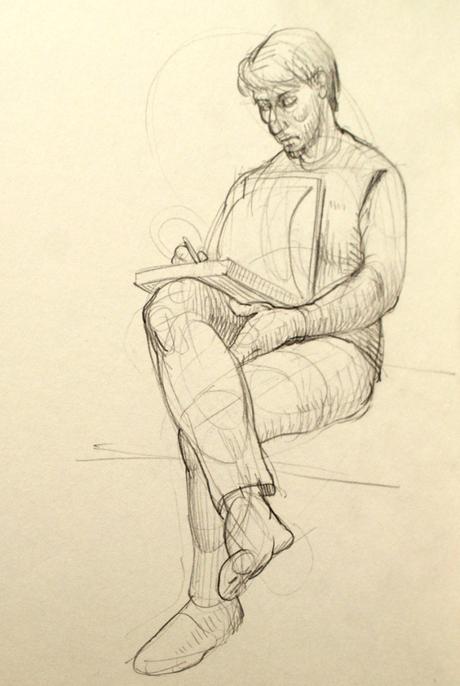
Expression, for Wollheim (1987: 89), colours representation. Emotions are crucial to painting, and expression describes the way they weave through the application of paint, the organisation of the picture, the deliberate color choices and the atmospheric decisions, to list but a few variables, in order to provoke a particular emotional response from the viewer. This means the painter in fact steers away from ‘cold’ naturalism, from faithful visual description, and imbues her representation with visual qualities that imply something intangible. It means that we are invited to see emotion, as it plays out in the delicate interplay of painterly techniques. Something in reality is sacrificed, some accuracy or disinterested depiction, in order to co-opt expression into representation. The two are woven together with paint into one visual output. Expression abstracts representation into a more emotional variation on things seen or imagined.
But the viewer needs to bring a certain sensitivity to the expressive tint of the picture, a type of perception even, which Wollheim (1987: 80) calls ‘expressive perception.’ As Wollheim (1987: 82) elaborates, there are mirrored means of transferring emotions between ourselves and the external world; either our own mood alters the way we perceive what is around us—what we would commonly call projection—or we are affected by our surroundings. It is true that we could project our own feelings, likewise, onto a painting, but since the artist has mixed emotional content into the paint, a greater receptiveness promises to yield something specific from the painting. It is our own ability to project emotions onto what we see that enables us to sympathise with a painter doing the same in paint. She asks us to forget ourselves for a moment and to see through her eyes, through her sunny disposition or her fog of melancholy.
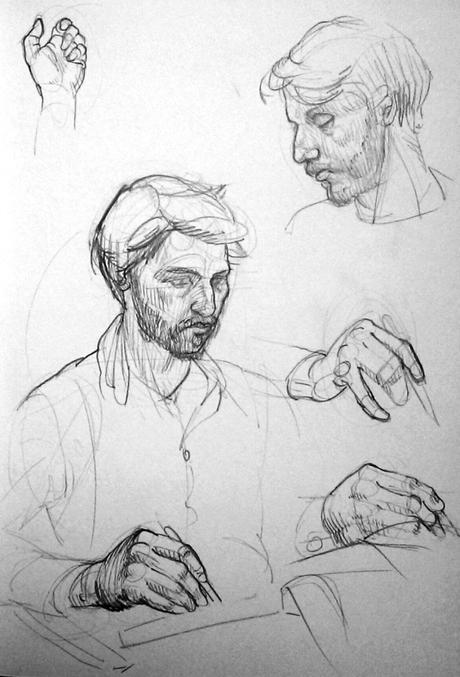
Wollheim’s demand for expressive perception is rather nice, because it requires a certain kind of attention from the viewer, but does not permit him to read just anything he likes into a painting. Viewers like to have something to do (Gombrich 1959: 169), and we will grant them this responsibility without giving away the creative authority of the artist. Wollheim’s (1987: 305) demand means that a standard of correctness accompanies both representation and expression. The artist intends to convey certain content laden with certain emotions, all of which is accessible to the viewer by direct communion with the picture, with the implication that he can be correct or incorrect about what he discovers there (Wollheim 1987: 85, 101).
But such standards hardly remove the pleasure of looking at a painting. Wollheim (1987: 98, 100) is eager to convey that seeing the paint is a delightful experience in itself, and that simple visual delight in a painting, provoked by the deliciously expressive qualities of paint and its handling, comprises no small part of our encounter with painting. Wollheim sends us in the direction of Proust for a lovely elucidation of this experience. Chardin, Proust (1988: 102) describes, has seen serene beauty in a humble arrangement in a kitchen, and has painted it with palpable tenderness; his ‘pleasure was so intense that it overflowed into smooth strokes, eternal colours.’ The viewer, utterly seduced by Chardin’s vision, thenceforth notices that a fresh charm falls over ordinary domestic scenes. This delight, notes Wollheim (1987: 99), is stirred up by Chardin’s expert control of his own emotional projection that he invites us to sample. ‘Your awareness had to wait until Chardin entered into the scene to raise it to his level of pleasure’ (Proust 1988: 102).
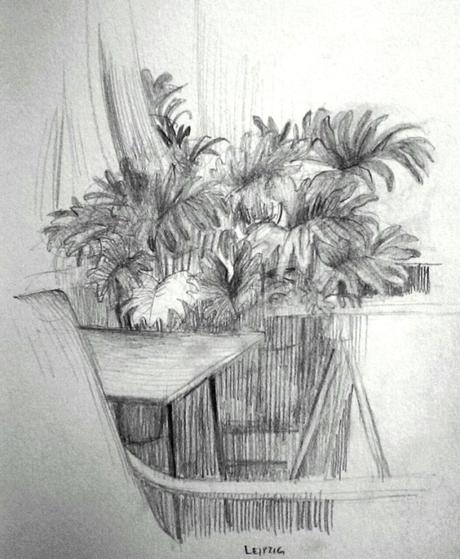
And so Wollheim (1987: 185) hopes to persuade us that representational paintings do not ‘trade on illusion,’ but rely on, rather, ‘in a supplementary role, imagination.’ Representation does not simply hand us a likeness, it does not forge a strict equivalence with the world, or simply stand in for it symbolically; nor does it seek to deceive us. Instead, it appeals to our pleasure in discovering that guarded thought in the lather of paint. This underlines the irrevocable importance of the paint, the matiére, the medium that carries the thoughts of the artist via her movements.
Representation, in a sort of self-conscious way, hopes to draw attention to its physicality while seducing us with a hint of something recognisable shot through with emotions. It invites us to linger on the interlocking cues in the way the paint is applied and in the content, to discover something of the artist’s insight. We are asked to imagine the world intentionally reconfigured in muddy paste on a flat surface; we are asked to imagine the way one feels if one looks at the world and projects emotions that color the world this way or that. Representation is more fundamentally grounded in the technical than in resemblance, symbols or illusion. In bringing us ever back to the way paint is applied, it offers a firm starting point for a theory of a visual language.
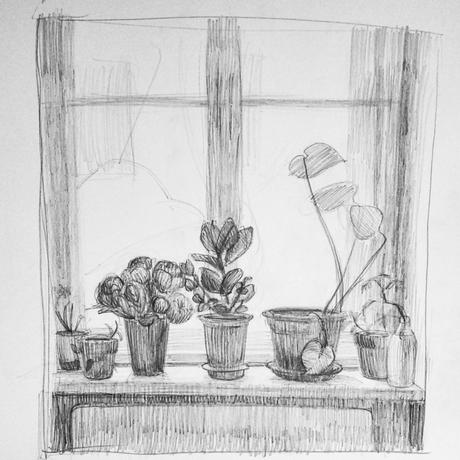
Gombrich, E. H. 1959. Art and Illusion. Phaidon: London.
Goodman, Nelson. 1976. Languages of Art: An Approach to a Theory of Symbols. 2. ed. Hackett: Indianapolis, Ind.
Proust, Marcel. [1954] 1988. ‘Chardin: The Essence of Things,’ trans. Mina Curtiss, in Against Saint-Beuve and Other Essays. Penguin: London.
Wollheim, Richard. 1987. Painting as an Art. 1. publ. Thames and Hudson: London.

